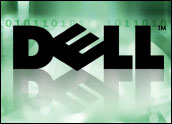
EMC CEO and Chairman Joe Tucci called the company’s “Smartest System” launch event in New York City, “not just largest in the history of the company but of the industry” — but was that a fact or mere PR-speak? For my money, it was the former.
The event found EMC playing at the top of its game with an impressive number (41) of new and upgraded products. However, the magnitude of improvement in many — which essentially doubled the performance of previous generations — was testimony to the efforts of a company that apparently doesn’t know how to stop innovating.
A 2X performance improvement is impressive, but consider also that EMC has nearly doubled its total storage market share since 1997 and its annual revenues since 2003. These are notable enough feats, but they occurred while the company was literally reinventing itself.
Following 2001’s dot-com bust, Tucci shook the company up and led it in a new, yet complementary, direction by combining aggressive product and service development (via sustained R&D spending of some 12 percentof total annual revenues) with more than 40 occasionally revolutionary acquisitions.
The most radical of these was and remains VMware, which played key roles in this latest launch. EMC is continuing to deliver on its promise of optimizing all company solutions for VMware technologies and virtual environments (the count now stands at more than 3/4 of its product portfolio). But throughout the launch, Tucci, along with company President and COO Pat Gelsinger and other executives, noted the degree to which VMware energizes EMC solutions, its overarching “Virtual Storage” strategy, and creative efforts such as the company’s VCE partnership with VMware, Cisco and Intel.
Road Ahead Is Wide Open
By doubling up performance, EMC is doubling down its bets that enterprises both want and need ever-more-robust and capacious storage solutions. So what sorts of benefits can customers enjoy from these new offerings?
- A 2X throughput improvement (significantly enhancing OLTP and other “decision making” workloads) in EMC’s flagship Symmetrix VMAX systems via a backwards-compatible software upgrade. Gelsinger wryly noted that this highlights how the Symmetrix team routinely ignores his orders — he’d only requested a 1.5X improvement.
- A doubling of throughput and capacity in next-gen Data Domain arrays. This makes the new single- and dual- controller systems, respectively, 8X and 7X faster than the nearest competing data deduplication solutions.
- Finally, the integration and replacement of EMC’s two signature midrange storage families — CLARiiON and Celerra — into the singular new VNX platform, its first unified mid-market storage solution.
Is this mainly about EMC enhancing various flavors of its storage offerings or is something more fundamental at play? Consider this: First, clients usually welcome substantial performance upticks, like those in Symmetrix VMAX and Data Domain, but the way that EMC achieved those results also bodes well for the future.
Doubling the throughput of the industry’s best-performing enterprise storage array though a software upgrade suggests that the road ahead is wide open for further improvements. That’s great for Symmetrix’ traditional client base, but it should also profoundly impact related efforts, including VCE’s Vblock solutions, which leverage Symmetrix for core storage.
So far as Data Domain’s improvements go, the platform was already the established leader in inline deduplication (which EMC noted has resulted in the platform garnering a majority share of the dedupe market). Moreover, while Data Domain is “CPU-bound” (that is, its performance scales in parallel with Intel’s Xeon architecture), competing solutions tend to be “disk-bound,” with performance linked to HDD technologies. As a result, unless there is a significant improvement in HDD technology or competitors execute difficult shifts in development, Data Domain is likely to continue retaining and increasing its performance advantage.
EMC’s new VNX platform obviously provides the company’s midmarket customers greater choice and flexibility. In essence, the company’s answer to “SAN or NAS?” quandaries is now a simple, “Yes.” Since VNX is optimized for VMware, the new platform also doubles as a unified solution and single point of storage management for physical servers and virtual machines.
Perhaps most importantly, VNX should provide EMC an effective weapon against one of its most significant competitors; NetApp, a leader in unified storage. Will VNX take the market by storm? Probably not in short order, but midrange storage has just become a lot more “interesting” than it has been for some time (and perhaps more than EMC competitors would really prefer).
Choose Your Superlative
So how do EMC’s announcements look a week after the fact? They’re still impressive, encompassing the company’s solution families. They include notable improvements to the already impressive Symmetrix VMAX line and entirely replace the established CLARiiON and Celerra families with the unified VNX platform. And I haven’t dug deeply into the specifics of the new features or even touched on all-new solutions like Isilon, EMC’s platform for multimedia/Big Data applications.
While the strength and scope of these offerings are impressive, there are some challenges that innovation alone can’t effectively address. For example, I admire the “best of breed” development approach EMC and its partners are taking in VCE, and I find Vblocks to be among the IT market’s most intriguing products.
However, such solutions can only succeed if their contributing vendors’ technologies are widely recognized as the “best” of their particular breeds. The weak link in Vblock is Cisco’s UCS server architecture — a great story badly in need of a great (or at least, considerably better) storyteller than it has today.
However, that and a few other niggling issues do not measurably detract from EMC’s overall achievement. By doubling down its bets on storage innovation and doubling up the performance of key product lines, the company has significantly expanded opportunities for both itself and its myriad customers.
Whether EMC’s launch is the largest in the history of the industry is a question I’ll leave to others to sort out. But from where I stand, it appears the most ambitious, most fully conceived group of new and improved solutions ever produced by EMC or any other storage vendor.
E-Commerce Times columnist Charles King is principal analyst for Pund-IT, an IT industry consultancy that emphasizes understanding technology and product evolution, and interpreting the effects these changes will have on business customers and the greater IT marketplace.













































Social Media
See all Social Media